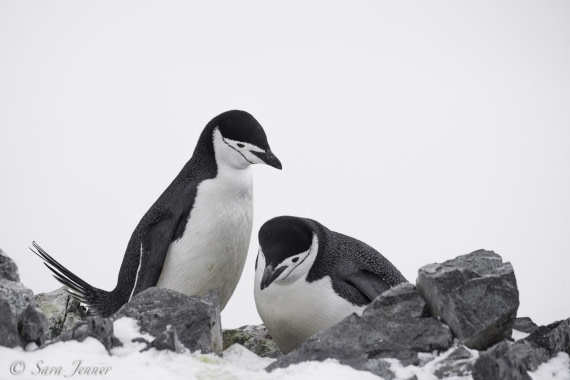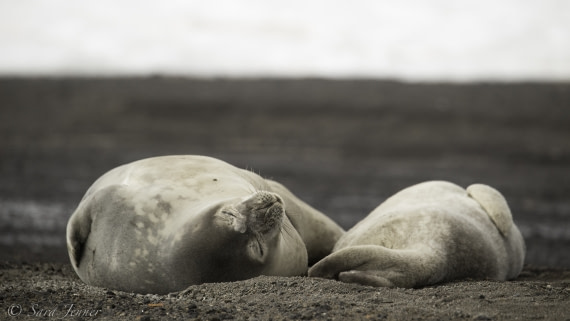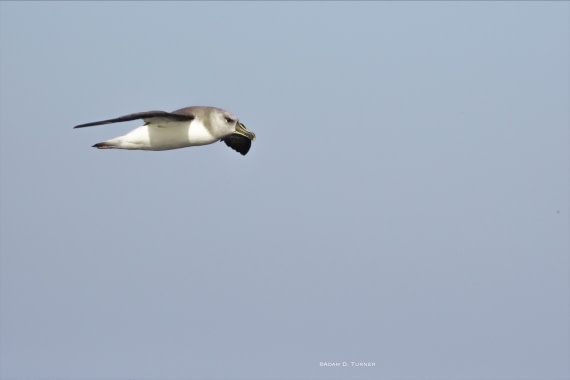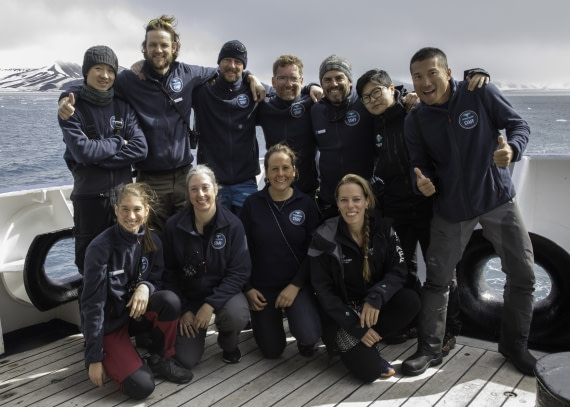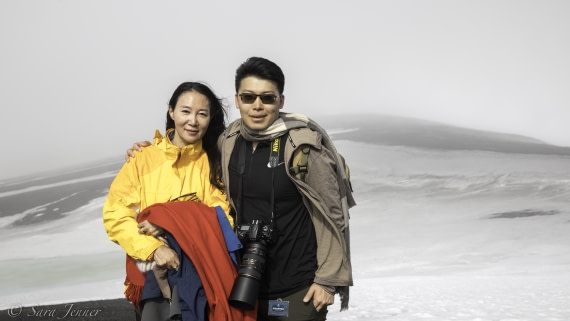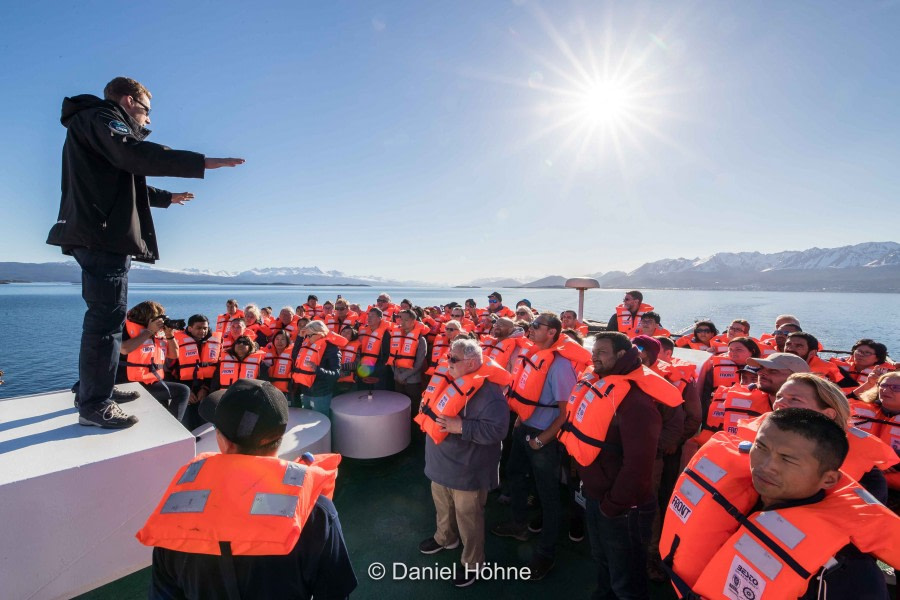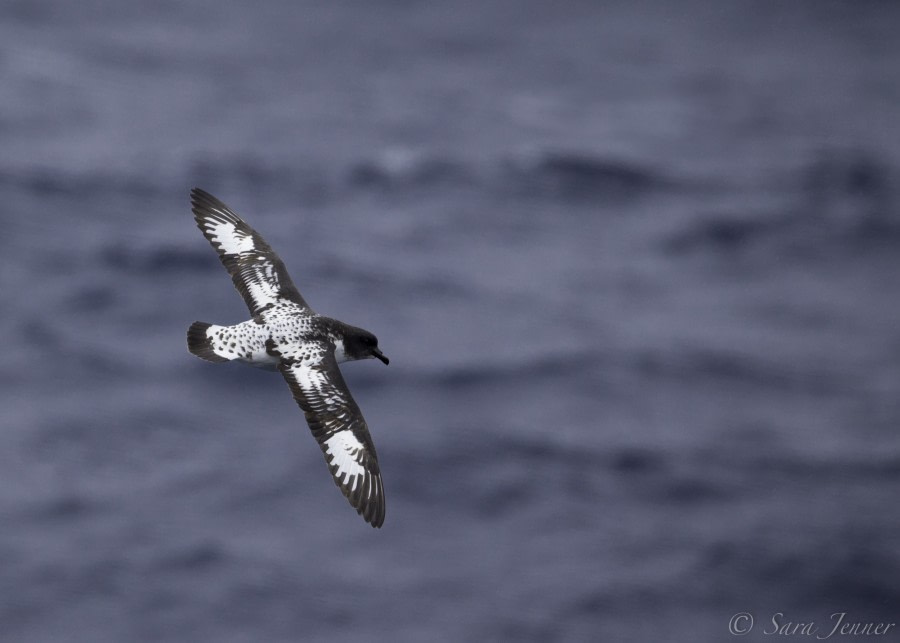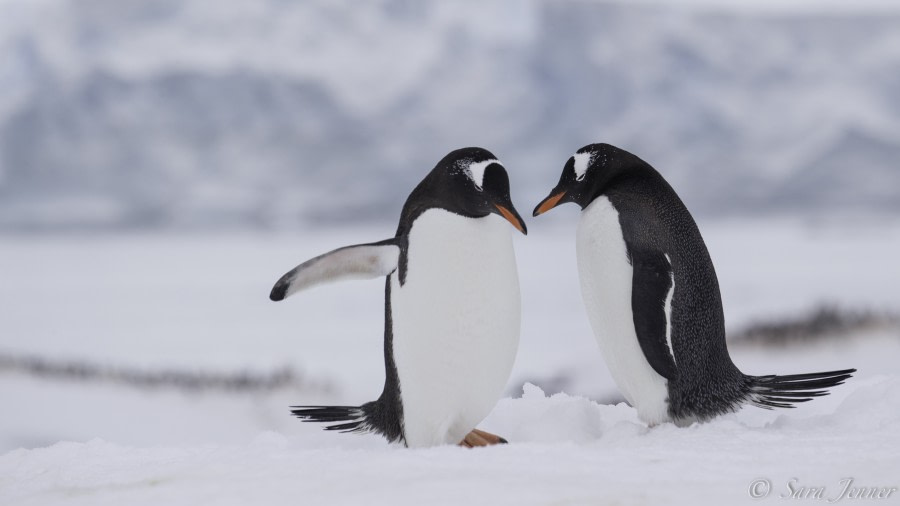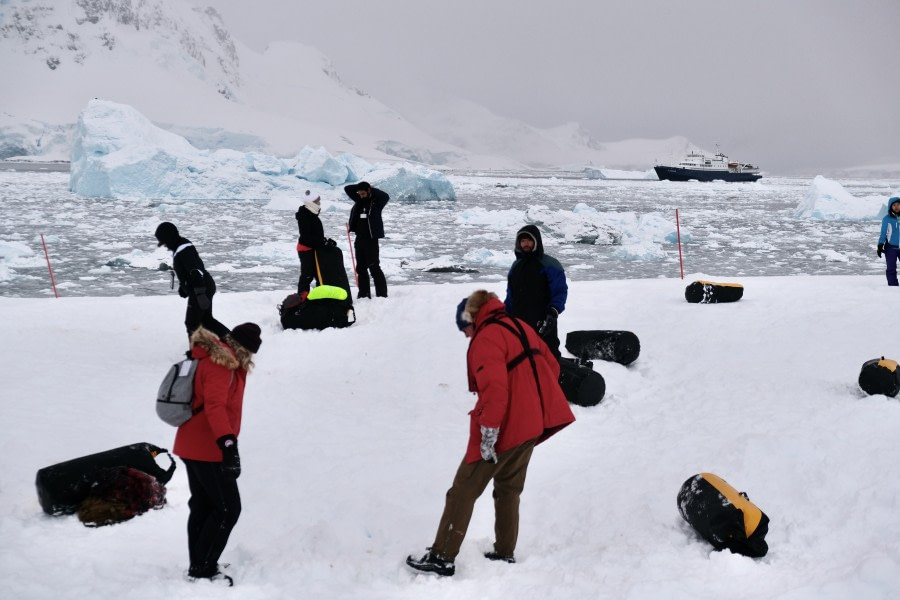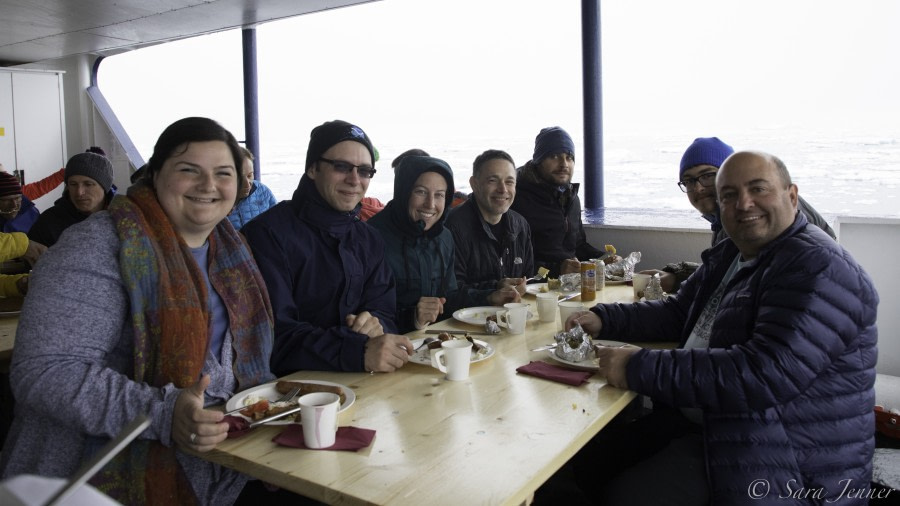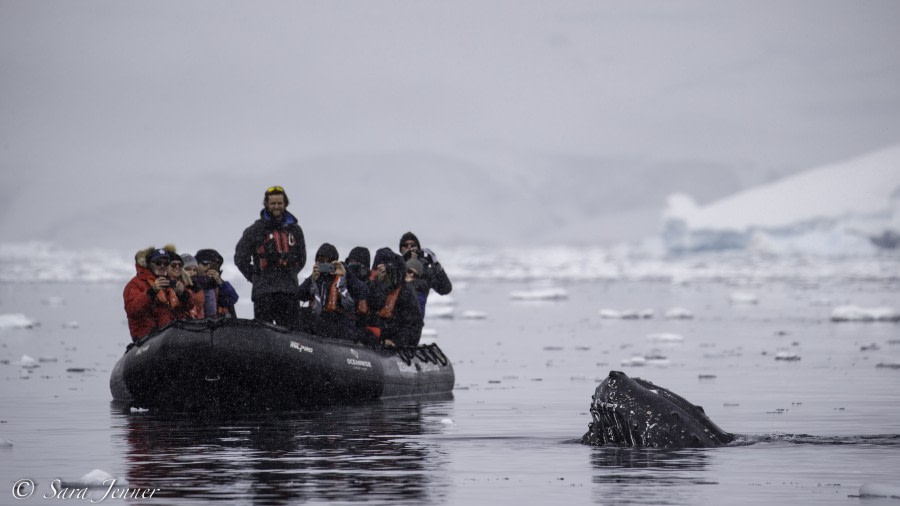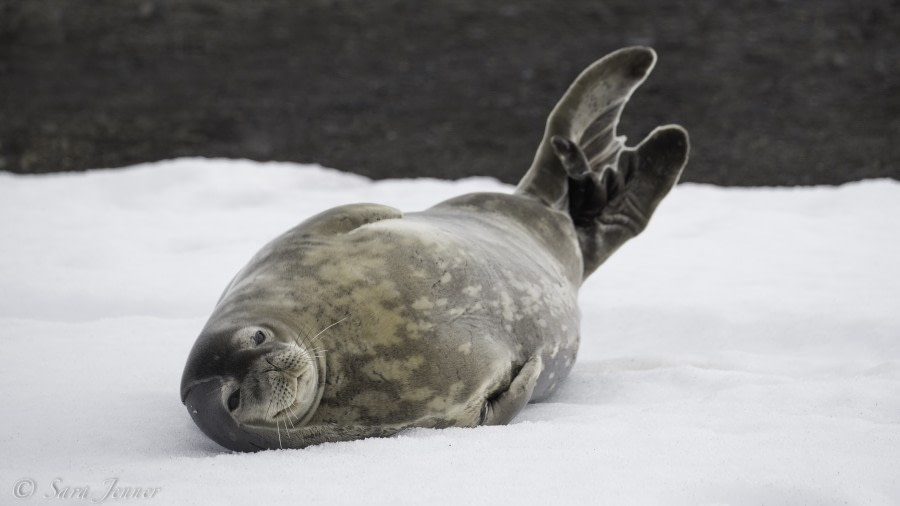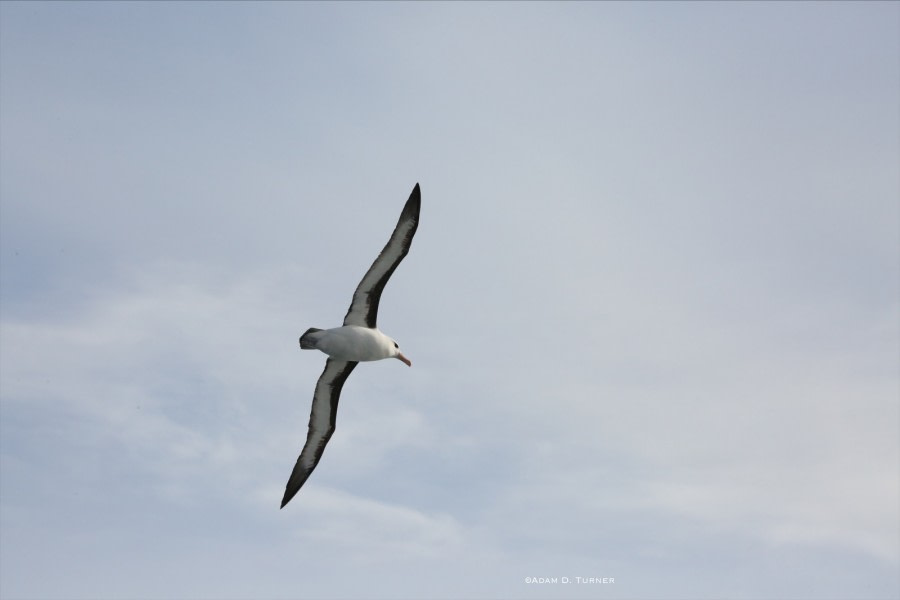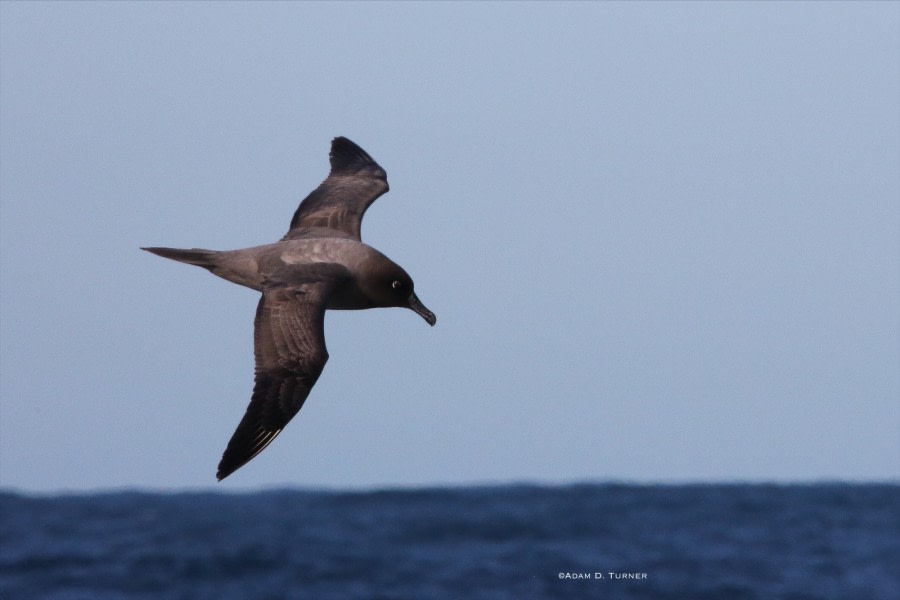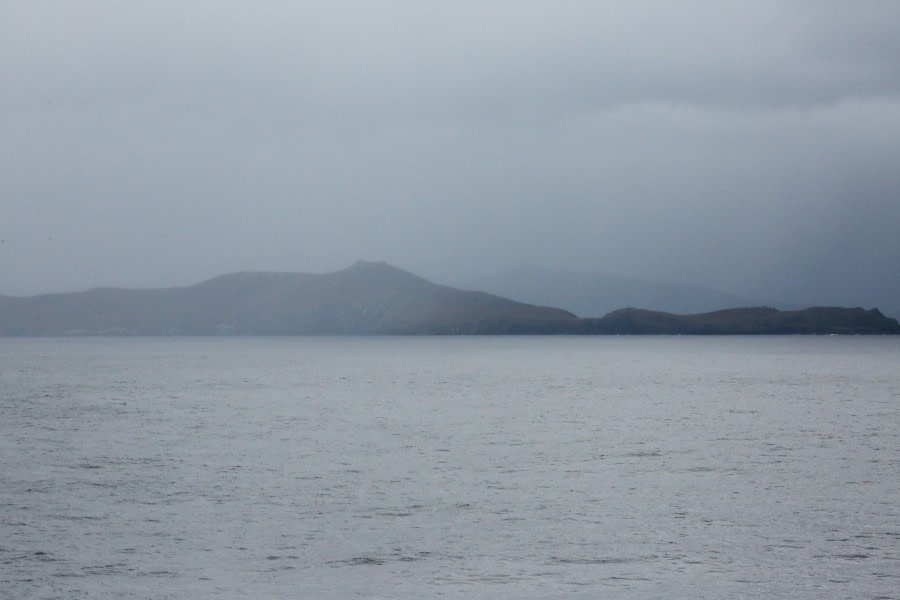| Date: |
14.11.2019 |
| Position: |
64º 56.4’ S / 062º 32.2’ W |
| Wind: |
3-5 knots |
| Weather: |
cloudy |
| Air Temperature: |
-3 |
The campers arrived back at the ship very early in the morning after a windy night and were eager for some hot coffee and breakfast. Our first landing for the day was Neko Harbour, our first continental landing.
Neko Harbour was discovered by Belgian explorer Adrien de Gerlache during his 1897―99 expedition and was named after a whaling boat, the Neko, which operated in the area between 1911 and 1924. The glacier behind Neko Harbour is extremely active, frequently calving large chunks of ice that splash thunderously into the bay. Hence the expedition team stressed the importance of staying off the beach and keeping on higher ground.
Keeping on the higher ground was not a problem for us because there were plenty of gentoo penguins to watch as we hiked to the summit. We followed a path marked by our expedition guides and admired the fresh snow where no one had set foot since the most recent fresh snowfall. The only footprints were those of the gentoos who had made paths down to the beach to get rocks for their nests. As we walked up the circular path we could see people high up in the distance. We were the only ship in the area, so we knew it had to be the rest of the passengers from the Plancius. Up we go! The hike up to the top had us huffing and puffing, but we knew the view would be worth the hike. Even from the lower levels we could see the icebergs drifting by in their different shapes and colours.
The view from the top was breathtaking. We had front row seats for the calving glaciers, which we could hear before we spotted which parts were falling into the sea. It was hard to imagine how high up we really were until we looked down at the penguins who looked like little ants. We sat in the fresh snow in silence and breathed deeply to take it all in. Even though this wasn’t our first landing, it still seemed surreal that we were actually in Antarctica, surrounded by such natural beauty.
The wind picked up while we were walking back down to the beach and our landing site was beginning to get surrounded by grounded ice. The tide was retreating which meant our zodiac drivers had to be extra cautious getting us all boarded and back to the ship. We would have loved to have stayed at the peak just a little bit longer, but we knew another delicious lunch awaited us on board.
For our second landing we visited Useful Island, aptly named for the good opportunity the whalers had to spot whales and seals from the summit where a large cylindrical orange beacon stands about 2m tall. The island was discovered by the Belgian Antarctic Expedition, 1897–99, under Adrien de Gerlache. As our zodiacs weaved around the icebergs we made a landing on a rocky slope and were greeted by a large Weddell Seal amongst the gentoo penguins. Who could resist that cute puppy dog face. We hiked the same 100m elevation change that the penguins hike to get a head start on finding the perfect nesting site. On our way up we saw two colonies of chinstrap penguins who had already claimed their nesting spots for the season. Their mating calls sounded quite different than the gentoos and we watched as some mating rituals took place. The summit was still covered in snow and were rewarded with a clear 360º degree view of the area. Calm seas, fluffy clouds, plenty of icebergs: who could ask for anything more.
At our evening recap, Chloe talked to us about the Antarctic bear. We were quite sure that we were nowhere near polar bears, but as we listened intently we learned that there is a small organism, less than a millimetre, called the Tardigrad which looks just like a bear. When threatened it curls into a ball in a tun state making it indestructible. They can be found as high as mountain tops, as deep as the ocean floor and have even been to space!
Before dinner Adam briefed us for the following day and told us that the ice was so thick in the area that the Port Lockroy staff hadn’t been able to get to the site. If the staff couldn’t get there, then we definitely wouldn’t make it through the ice either. So, as we do in Antarctica, we changed our plans due to weather and we’d visit Damoy Point as our first landing tomorrow. Everyone made their way to the dining lounge for another delicious meal before the campers headed out for a night on the white continent.
Camping
A group of 33 people from different parts of this planet had an important meeting in a camping site in an unusual place. They came from Canada; North, East, South and Central USA; The Netherlands, India, Spain, UK and Argentina to have this special time at Stoney Point, one of the most beautiful places close to Paradise Bay, Antarctica.
We started with a Zodiac cruising from the Vessel, passing through growlers of ice that a recent calving glacier spread on the area. It was snowing lightly, with a sweet breeze from the east. After a safety briefing everybody went to find a place to dig their ice grave to pass the night under the stars in one of the coldest places in the world. Two hours later everybody was ready to sleep, the guides checked one by one and the silence become the main feeling of the polar night.
We could hear some thunders in the distance away from the calving glaciers, the currents driving big bergs, collapsing in between. Silence again. In the distance there were some Gentoes singing, two Giant Petrels passing by, a curious Sheathbill jumping from one trench to another looking for something special to steal.
The time passed quickly. After six and a half hours we woke up at 4:45 am to pack all our equipment to go back to the mothership. The zodiacs had a challenging task of navigating the icebergs that had drifted into our campsite over the night, but we arrived safely back to our beloved M/V Plancius where we took hot showers and enjoyed a full breakfast.
Happy faces, lots of smiles, people laughing, that’s what it’s all about….to have fun.

